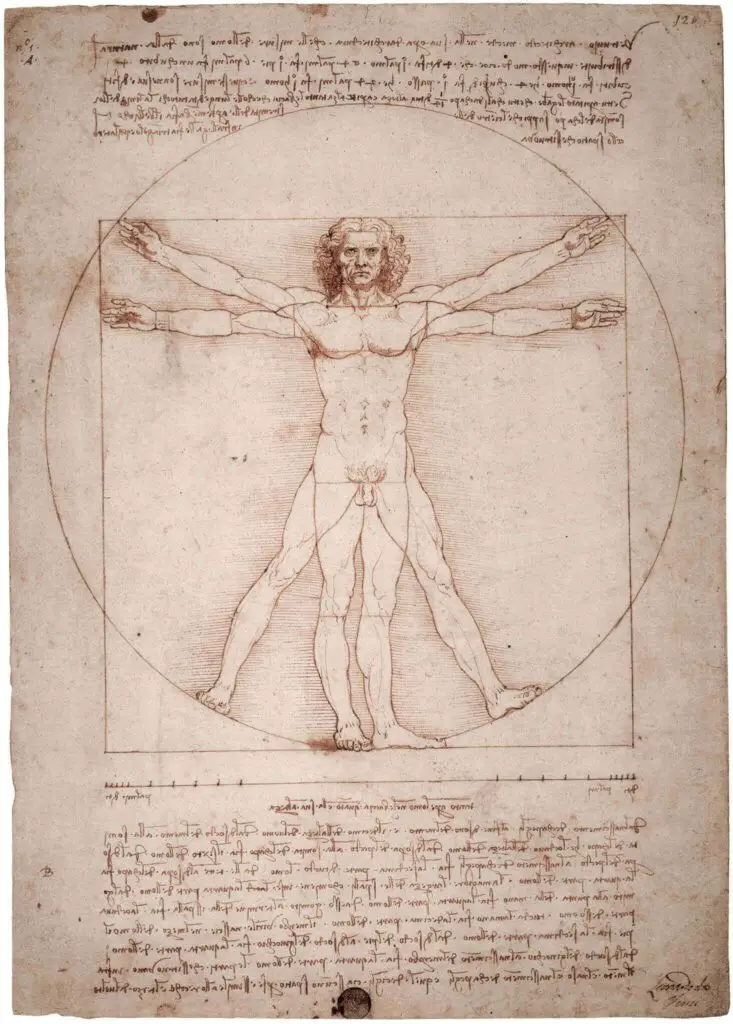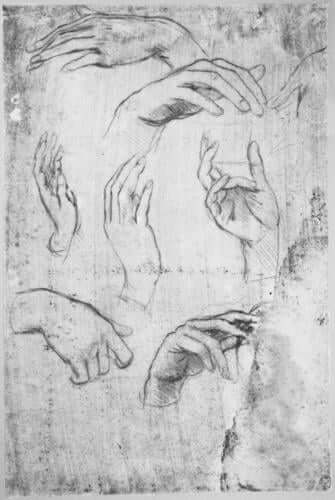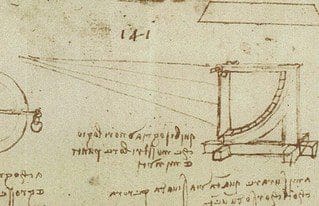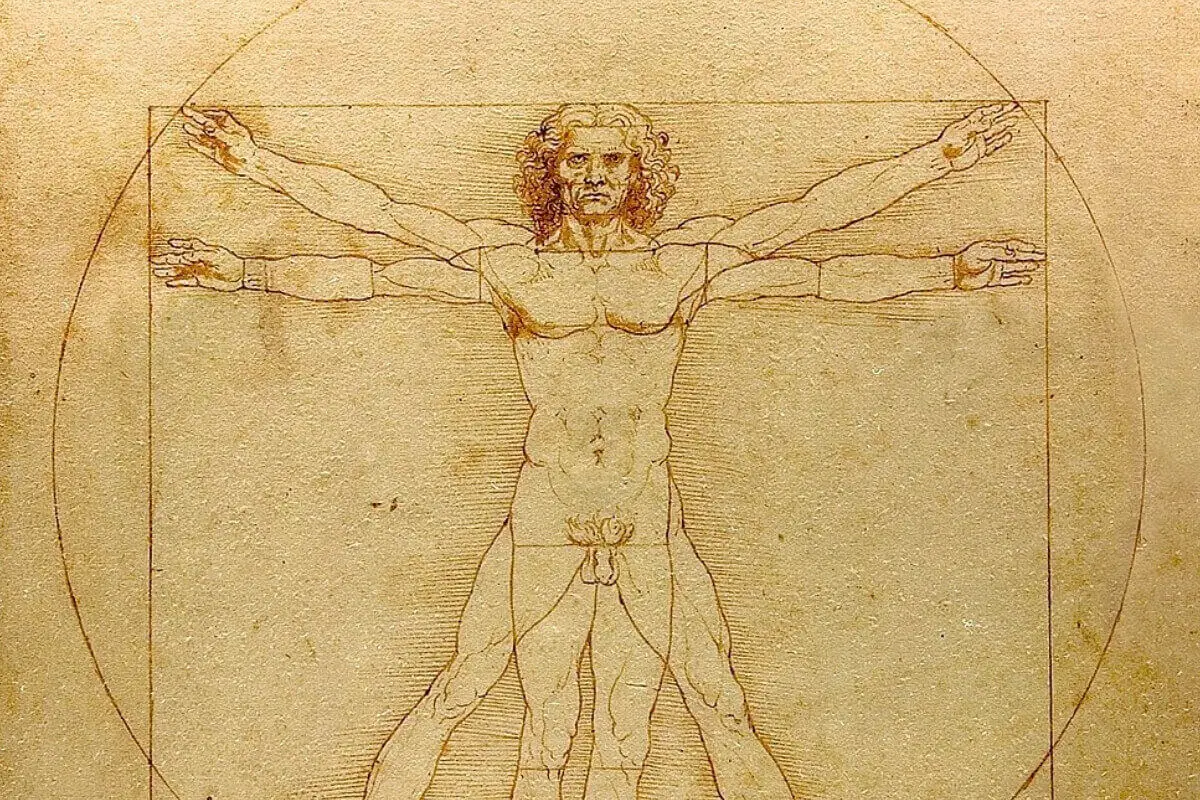Leonardo da Vinci, a polymath of the High Renaissance, was a gifted painter and an innovative and meticulous sketch artist whose works have profoundly impacted art and culture.
His sketches, culminating in various influences and incisive observations, are an ode to his genius, reflecting his meticulous attention to detail and profound understanding of human anatomy, light and shadow, perspective, and proportion.
Table of Contents
- The Technique Behind Leonardo da Vinci’s Sketches
- Exploring Content and Symbolism in Da Vinci’s Sketches
- The Impact of Da Vinci’s Sketches on Art and Culture
- Related Questions
The Technique Behind Leonardo da Vinci’s Sketches
Exploring Leonardo da Vinci’s Remarkable Sketching Techniques
Leonardo da Vinci, a sublime embodiment of the Renaissance’s creative minds, was no ordinary artist. Many art enthusiasts know him for his legendary paintings like The Last Supper and Mona Lisa. Yet, an often-overlooked facet of his genius lay in his sketches, where he harnessed innovative techniques that profoundly influenced the tide of art history.
Da Vinci’s sketching was not merely a precursor to his masterpieces but a stand-alone form of art rich in dynamism and detail. Understanding da Vinci’s approach demands an exploration of some of his calm techniques that revolutionized sketching: studies of light and shade, hatching cross-hatching, and anatomical studies.
An exemplary technique from da Vinci’s repertoire is chiaroscuro, a study of light and shade. He employed this technique skilfully, creating three-dimensionality and lending palpable life to his sketches.
It involved juxtaposing dark and light areas and manipulating contrasts to imbue his sketches with depth. Seedlings of this technique are evident in da Vinci’s work, ‘Study of a Tuscan Landscape.’

Interestingly, da Vinci also pioneered ‘sfumato,’ a method of blurring or softening sharp outlines, mystifying the boundaries between subject and background, colors, and tones. The technique creates a ‘smoky’ effect, as seen profoundly in his drawing of ‘The Virgin and Child with Saint Anne and Saint John the Baptist.’
Nested within these two techniques is the skillful application of hatching and cross-hatching. Hatching depicts various shades and textural details involving intricate parallel lines drawn close together.
Cross-hatching, by contrast, employs intersecting lines to create a mesh-like structure, perfect for illustrating darker areas. These sketching maneuvers are beautifully exhibited in his study of ‘An Old Man.’
The quintessence of da Vinci’s sketching technique lay in his detailed anatomical studies. His relentless interest in human and animal anatomy provoked him to dissect cadavers, learning muscle arrangements, skeletal structures, and even the intricate workings of the human heart. This medical knowledge lent an unrivaled accuracy to his drawings, as evident in his sketch ‘The Vitruvian Man.’
In conclusion, Leonardo da Vinci’s sketching techniques were no less than revolutionary. Their scale and brilliance inspire countless artists today, testifying to da Vinci’s timeless legacy.
One can’t help but marvel at the inherent genius of da Vinci, whose bold, innovative approach stood at the epoch of a new dawn in art, shaping the very contours of art history. In the grand tapestry of human achievement, these seminal sketches by da Vinci are invaluable strands, perpetuating the grace and wisdom of one of history’s most legendary artists.
Can one capture the essence of da Vinci’s techniques in a few words? Perhaps not. Yet, each stroke of the master’s hand, each dash of pen against paper, each dedicated dissection, united by his insatiable curiosity, is a testament.
And therein lies the proper tribute to Leonardo da Vinci – a virtuoso whose remarkable sketches continue to guide us through the labyrinth of art itself.
Exploring Content and Symbolism in Da Vinci’s Sketches
Deciphering Da Vinci: Uncovering Meaning and Symbolism in His Sketch Work
A keen observer can discover a chronicle of the artist’s observations, experiments, and illuminations in the labyrinth of Leonardo da Vinci’s sketches. Deeply infused with symbolism and rich in detail, these sketches serve as an open book to understand the workings of a mastermind that helped shape the discourse of art and science.
It is pivotal to recognize that da Vinci’s sketch work is his laboratory – where he could experiment without a client’s constraints or society’s vigil. He merged form and function here, intertwining anatomy with aesthetic principles and fusing symbolism with science.
The sketches ooze with a universe of ideas, hypotheses, and musings, each providing a glimpse of the intricate pursuits of da Vinci’s genius mind.
One of the most intriguing aspects of da Vinci’s sketch work is his employment of allegories and symbols. Varying from mundanely simple to exquisitely complex, symbolic meanings are woven into his sketches’ tapestry.

For instance, the famed Vitruvian Man is more than just a study in human proportion. It symbolizes the harmonious relationship between man and nature, math and art, and represents the nucleus of universal balance – interpreted by da Vinci from Vitruvius’ principles.
Da Vinci’s sketches teem with iconography derived from diverse cultures and periods. He often incorporated botanical elements to infuse his work with meaning, making his sketches a canvas of codified messages.
His notebooks abound with botanical sketches, with plants symbolizing virtues, religious beliefs, or human conditions. Flowers such as lilies and roses are depicted to convey innocence, love, or purity—their meaning shifting like a chameleon, depending upon the context.
In his sketches of inventions, da Vinci not only portrayed his designs’ physicality but also embedded his reflections on the human condition. The innovative mechanisms in his sketches correspond to the transitioning prevalent thought process of his era, morphing from medieval to Renaissance thinking and marking the birth of the modern world.
Here, da Vinci renders symbolism in its most innovative form—using sketches as metaphoric vehicles for societal change.
Da Vinci’s sketches are genuinely remarkable for their visual and intellectual depth. Symbolism is intricately intertwined, adding layers that push the envelope of basic interpretation. They are silent testimonies to da Vinci’s wisdom, curiosity, and relentless pursuit of knowledge about the world.
In conclusion, da Vinci’s sketches debate observation and imagination, realism, and symbolism. They remain enduring portraits of his multidisciplinary mind, offering windows into areas of human knowledge and exploration that remain relevant today.
Understanding the symbolism and content in da Vinci’s sketches offers a more profound viewpoint into the intricate universe he endeavored to unravel, providing invaluable insight into the artistry and enigma that was – and is – Leonardo da Vinci.

The Impact of Da Vinci’s Sketches on Art and Culture
Leonardo da Vinci’s sketches represent a rich tapestry of meticulous observation, nuanced understanding, and exceptional creativity.
These artworks serve as visual treatises, encapsulating concepts from scientifically intricate to conceptual abstraction.
Serving as an obvious testament to his mastery, they have become an integral part of the broader sphere of visual and intellectual fascination. They offer transformative ways of seeing and understanding the world, therefore proving influential in global art and culture shaping.
One can discern an innovative compression of form and function in these sketches.
The perceptive fusion of anatomical precision with aesthetic sensibilities marked a paradigm shift that heralded the emergence of an enlightened approach toward art and science.
A keen observer, Leonardo decoded the secrets of nature, the human form, and the intricate mechanics of the world around him, all through the simple elegance of a drawing.
The appreciation for this intricate interplay between aesthetics and scientific principles hails directly from the legacy of da Vinci’s sketches.
On the surface, the subjects sketched by Leonardo da Vinci vary from the human form to botanical elements, inventions, and even elements of diverse cultures.
However, a closer look reveals an underlying connective tissue – the presence of allegories and symbols.

Leonardo infused profound symbolism with deft strokes into his sketches, offering a commentary beyond the immediately observable.
An observant eye will recognize the recurring theme of iconography borrowed from diverse cultures and historical periods.
What’s fascinating is that in doing so, Leonardo da Vinci inadvertently expanded the global artistic vocabulary.
His works, insights, and exploration of symbolism have continued illuminating artists’ paths, fostering the creation of artworks that push boundaries and reconceptualize established norms.
From observational studies of plants to detailed sketches of futuristic inventions, his work offers a unique blend of artistry and intellectual curiosity.
Not just mere drawings, these sketches helped Leonardo and subsequent artists to visualize and better understand the world.
Thus, in its purest form, art becomes a means of investigation, commentary, and exploration, feeding intellectual curiosity and stimulating societal evolution.
One must delve into his sketches to truly appreciate Leonardo da Vinci’s art.
Hidden within every stroke and line lies a universe of ideas, pooling into an ocean of thought.
His groundbreaking techniques, insightful symbols, and intricate detailing embody a wisdom that continues to inspire centuries later.
Analyzing the breadth and depth of da Vinci’s sketches, one can experience a sense of timelessness – a testament to their enduring relevance and importance.
These sketches are educational treasure troves, offering insights into art, history, culture, science, and the multidimensional potential of human creativity.

In conclusion, Leonardo da Vinci’s influence transcends the traditional boundaries of classical artistry.
The ripple effects of his imaginative sketches can be perceived not just in subsequent art movements and cultural shifts but in the continually evolving perspectives on art, creativity, and the pursuit of knowledge.
The power of Leonardo’s sketches lies in their audacious inquiry, insatiable curiosity, and timeless inspiration, forever encapsulating the genius of Leonardo da Vinci.
Leonardo da Vinci’s sketches, rich with ingenious techniques, detailed observations, and resounding symbolism, resonate far beyond the art world’s confines. His work forms a profound underpinning for various artistic expressions, shaping styles and educating future artists.
Beyond art, his sketches have influenced diverse fields such as medicine, engineering, and science, reiterating the universality of da Vinci’s innovations. More than just depictions of visages, landscapes, human anatomy, or inventions, these sketches are imperative facets of da Vinci’s legacy, epitomizing his avant-garde understanding of the world- a testament to the genius of one of history’s greatest polymaths.
Anita Louise Art is dedicated to art education, great artists, and inspiring others to find and create their art. We love art that uplifts and inspires. #ArtToMakeYouSmile! #ArtToMakeYouHappy!
If you are interested to see any of my art, you can find out more by clicking here. If you are interested in what inspires me and my paintings, you can discover more by clicking here.
We have a free newsletter and would love you to be part of our community; you can subscribe to the newsletter by clicking here. If you have any questions, I would be happy to talk to you. You can reach me, Anita, by clicking here.
Subscribe to our Anita Louise Art YouTube Channel filled with great videos and information by clicking here.
Join us for our podcast “5 Minutes With Art.” Spend just 5 minutes a week with us to discover and learn about great art and artists. You can find out more about our podcast by clicking here.
Related Questions
Guide To Leonardo Da Vinci’s 7 Most Important Drawings
Leonardo da Vinci’s drawings have fascinated generations, capturing beauty and awe in every medium he explored. Leonardo’s drawings capture something special about the artistic world that still captivates us today, from anatomy sketches to landscape studies to sketches from nature. Many Leonardo da Vinci drawings are considered iconic works of art.
By clicking here, you can learn more by reading Guide To Leonardo Da Vinci’s 7 Most Important Drawings.
Vincent Van Gogh Mark Making Techniques, Drawing Media Influences On Art
Vincent Van Gogh used fascinating mark marking techniques in how he used materials for his drawing and other media. Van Gogh used pencils, pens, ink, and paints. He also had unique brushstrokes in how he executed his painting. Japanese woodblock prints and Japanese art influenced Van Gogh.
By clicking here, you can learn more by reading Vincent Van Gogh Mark Making Techniques, Drawing Media Influences On Art.
Why Do People Say, ”Life Is Like Drawing Without An Eraser?
When an artist draws something by mistake, the artist can use an eraser and erase their mistakes. But in life, when we make a mistake, we can not erase those mistakes; we can use our mistakes as an opportunity to learn, grow and change our lives.
By clicking here, you can learn more by reading Why Do People Say, ”Life Is Like Drawing Without An Eraser?


